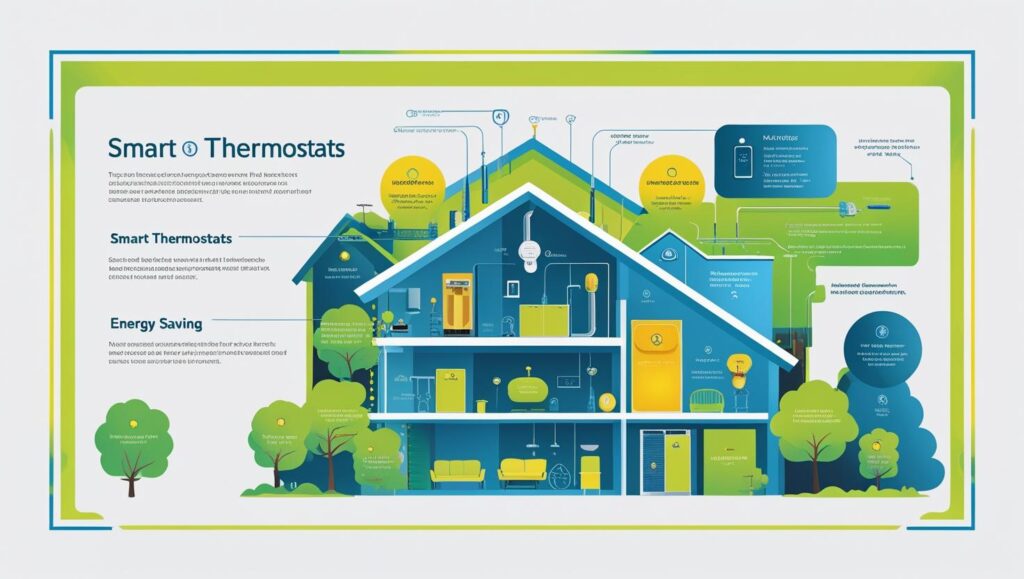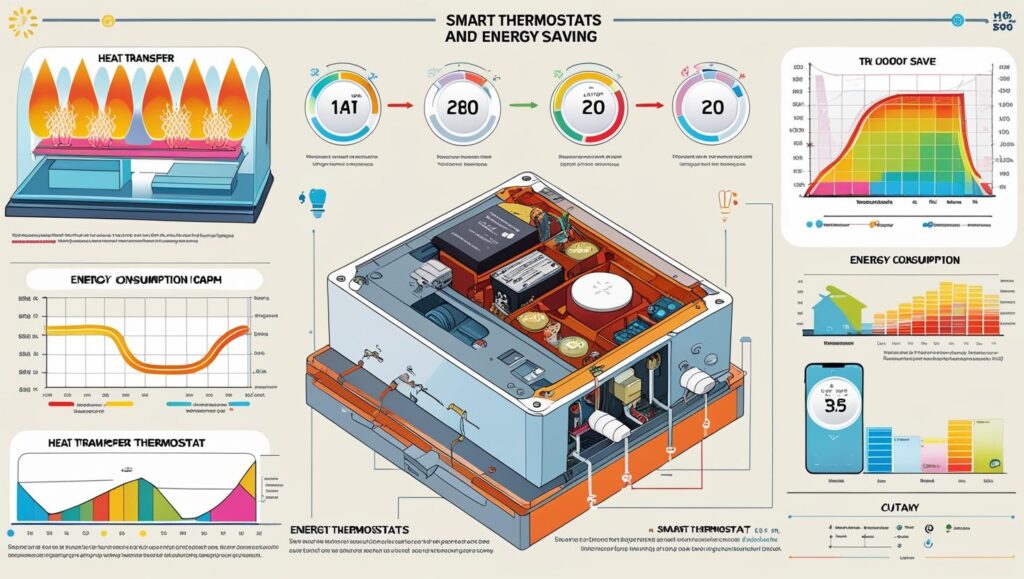We’ve all been there: a forgotten thermostat left running while you’re out, or a cold morning spent huddled under blankets before the heat kicks in. It’s not just uncomfortable; it’s a huge waste of energy and money. Enter the **smart thermostat**, a revolutionary device that’s changing the way we heat and cool our homes. But how do these gadgets work their magic? It’s more than just a fancy display. The science behind them combines advanced technology, behavioral psychology, and sophisticated algorithms to deliver significant energy savings. In this post, we’ll peel back the layers and explore the fascinating technology that makes **smart thermostats** an essential tool for a more efficient home.
What Makes a Thermostat “Smart”?
A traditional thermostat is a simple switch. It turns your HVAC system on when the temperature drops below a set point and turns it off when the temperature rises above it. A **smart thermostat** is a connected device with a brain. It uses a combination of sensors, internet connectivity, and machine learning to do far more than just regulate temperature. It learns your habits, adjusts to your schedule, and can even be controlled from your smartphone. This proactive approach is the key to its energy-saving capabilities.
The Role of Sensors and Connectivity
At the core of every **smart thermostat** are sensors. These aren’t just for measuring the ambient air temperature. Modern devices often include a range of sensors to gather data about their environment. For instance, some may have motion sensors to detect if anyone is home, while others might have humidity sensors to help with comfort and energy management. The connectivity, typically Wi-Fi, is what allows this data to be sent to a cloud-based server. This connection is also what enables you to control the thermostat remotely, no matter where you are. This simple act of remote control can prevent you from running your HVAC system for an empty house, leading to immediate savings.
Learning Algorithms and Machine Learning
This is where the real intelligence comes into play. When you first install a **smart thermostat**, it begins a learning period. It observes your temperature adjustments, noting when you turn the heat up in the morning or cool the house down in the evening. Over time, it builds a detailed profile of your household’s heating and cooling patterns. The machine learning algorithms then use this data to create an optimal schedule. Instead of a static program you have to manually set, the thermostat anticipates your needs. It learns, for example, that you typically leave for work at 8 a.m. and return around 5 p.m. It will then automatically lower the temperature during that period, ensuring you’re not paying to heat or cool an empty home. It even takes into account how long it takes to heat or cool your house, so it starts the process just in time for your arrival, maximizing comfort and efficiency.

Energy-Saving Features That Make a Difference
Beyond the core learning functionality, **smart thermostats** are packed with features designed to reduce your energy consumption. These features work in tandem to provide a comprehensive energy management solution.
- Geofencing: This feature uses your smartphone’s location to detect when you’ve left the house or are on your way home. As soon as you cross a virtual boundary (the geofence), the thermostat can automatically switch to an “away” setting to save energy, then turn back on when you’re headed back, ensuring the house is comfortable when you arrive.
- Energy Reports: Many smart thermostats provide detailed reports on your energy usage. These reports break down your heating and cooling habits, showing you where you’re using the most energy and offering suggestions for improvement. This data empowers you to make smarter choices.
- HVAC Monitoring and Alerts: These devices can monitor the performance of your heating and cooling system. They can alert you to potential issues, such as a clogged air filter or an unusual spike in runtime, before they lead to a full-blown breakdown. This preventative maintenance not only saves energy but can also save you from costly repairs.
- Integration with Other Smart Home Devices: Smart thermostats can integrate with other smart home products like smart speakers, smart lights, and even motorized blinds. This creates a cohesive ecosystem that can work together to optimize energy use. For example, your thermostat could communicate with your blinds to close them on a hot, sunny day, reducing the need for air conditioning.
Data-Driven Insights: A Look at the Numbers
The energy savings from using a **smart thermostat** aren’t just theoretical; they are backed by data. Studies have shown significant reductions in heating and cooling costs for homeowners who make the switch. The exact savings can vary depending on factors like climate, home size, and usage patterns, but the trend is clear.
| Study/Source | Energy Saving (Heating) | Energy Saving (Cooling) | Key Findings |
|---|---|---|---|
| ecobee, 2018 | 23% on average | 15% on average | Savings attributed to intuitive scheduling and smart home/away features. |
| Nest, 2015 | 10%-12% on average | 15% on average | Self-learning algorithms and geofencing were key drivers of savings. |
| Lawrence Berkeley National Laboratory | Varies widely | Varies widely | Confirms significant savings and highlights the importance of user engagement. |
This table demonstrates that the savings are substantial and well-documented. By leveraging these intelligent features, homeowners can take control of their energy consumption and make a meaningful impact on both their utility bills and the environment.
Overcoming Behavioral Barriers to Energy Efficiency
One of the biggest challenges to energy efficiency isn’t technology—it’s human behavior. We often forget to adjust our thermostats, or we’re not home to make the adjustment when it’s most needed. **Smart thermostats** provide a seamless solution to this problem. By automating the process, they remove the need for constant vigilance and manual intervention. They turn energy efficiency into a passive, background task. This “set it and forget it” approach is incredibly effective at reducing waste because it works even when we don’t think about it. By using advanced technology to sidestep our natural tendency to forget or be inconsistent, smart thermostats are more than just a gadget; they’re a behavioral tool for a more sustainable lifestyle. They empower us to be more efficient without the added cognitive load.
The Future of Smart Thermostats
The technology behind **smart thermostats** is constantly evolving. Future iterations are likely to include even more sophisticated features, such as integration with local weather forecasts to pre-heat or pre-cool your home more efficiently, or even using predictive algorithms based on grid demand to shift your energy use to off-peak hours. As artificial intelligence becomes more advanced, these devices will become even more personalized and effective. Imagine a thermostat that knows when you’re running a marathon and adjusts the temperature to a cooler setting, or one that detects an open window and automatically turns off the HVAC system in that zone. The possibilities are endless, and they all point to a future of smarter, more efficient homes. The journey towards a more sustainable home starts with a single, intelligent device. Ready to take control of your energy use and make your home smarter and more efficient? Upgrading to a smart thermostat is a great first step.



